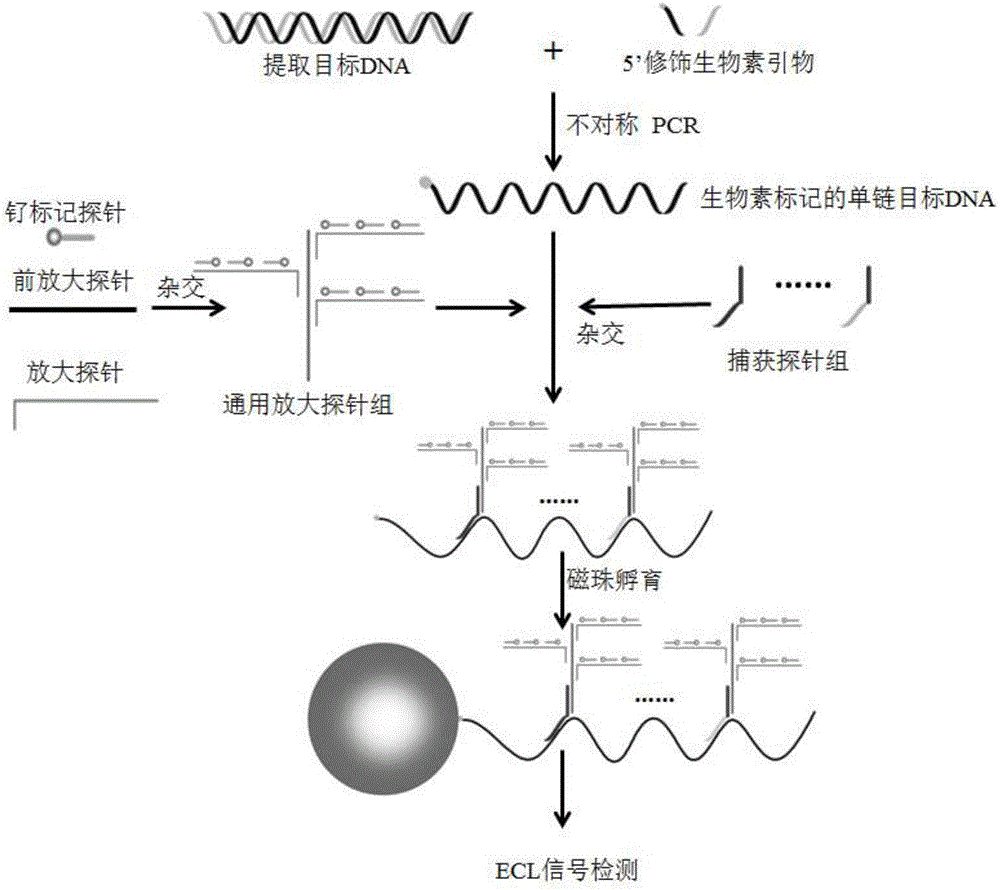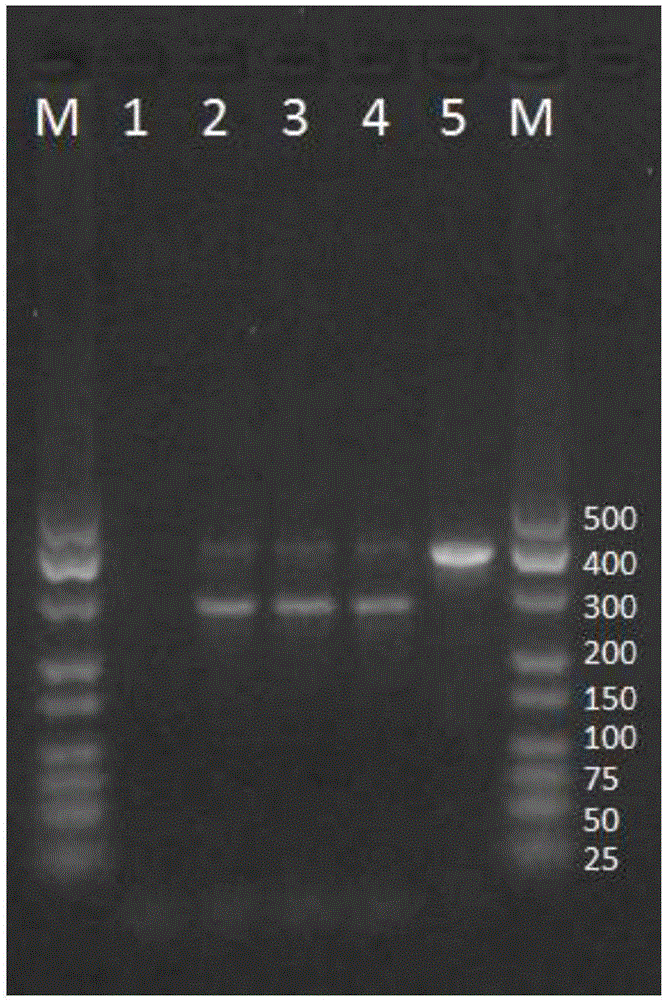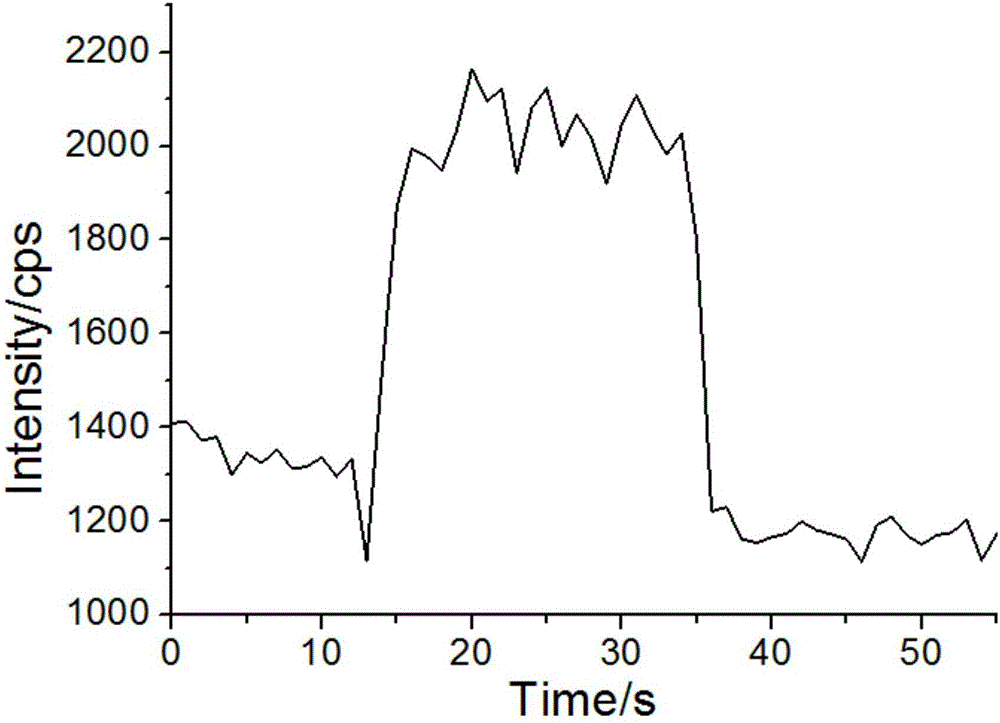Electrochemical luminescence nucleic acid detection method and kit based on branched DNA (Deoxyribonucleic Acid) amplification signal
A technology for amplifying signals and detection methods, applied in the fields of molecular biology and nucleic acid detection, can solve the problems of restricting the application of ECL technology, less sequence disclosure, and restricting the combination of technologies, etc., and achieves the effect of convenient automatic detection, simple equipment, and convenient operation.
- Summary
- Abstract
- Description
- Claims
- Application Information
AI Technical Summary
Problems solved by technology
Method used
Image
Examples
Embodiment 1
[0067] Foodborne Staphylococcus aureus detection
[0068] At present, harmful pathogenic microorganisms not only affect people's health and endanger people's lives, but also cause panic in the whole society and affect normal social operation. The traditional identification of pathogenic microorganisms mainly relies on methods such as bacterial culture, serology, biochemistry, and colony morphology for classification and identification. While reliable, these methods often take days or even weeks to obtain results; and colony morphology can also be affected by the environment. Nucleic acid detection of microorganisms can quickly and accurately identify pathogenic microorganisms, thereby minimizing the damage of pathogens to the human body.
[0069] 1) Strain culture
[0070] Staphylococcus aureus is cultured in 7.5% NaCl broth, Vibrio cholerae and Vibrio parahaemolyticus are cultured in alkaline peptone water, Streptococcus pyogenes is cultured in glucose meat infusion broth, ...
Embodiment 2
[0083] CaMV35S Promoter Screening Kit
[0084] The safety of genetically modified products is controversial. Most transgenic organisms contain CaMV35S promoter and NOS terminator, and these two genes are commonly used regulatory elements for exogenous gene expression in plants, which can be used as markers of transgenic organisms. In this example, the CaMV35S promoter was selected as the target gene to be tested for the transgenic product.
[0085] The kit includes the following components: Taq DNA polymerase, MgSO 4 , dNTP, 10×PCR Buffer, Marker, positive control and negative control, the positive control is a recombinant plasmid containing the CaMV35S promoter gene sequence, and the negative control is ddH 2 O.
[0086] Use of the kit: the kit selects the detection object of the CaMV35S promoter, and combines the detection method of branched DNA electrochemiluminescence for the detection of transgenic products.
[0087] Preservation of the kit: the contents in the kit sh...
PUM
 Login to View More
Login to View More Abstract
Description
Claims
Application Information
 Login to View More
Login to View More - R&D
- Intellectual Property
- Life Sciences
- Materials
- Tech Scout
- Unparalleled Data Quality
- Higher Quality Content
- 60% Fewer Hallucinations
Browse by: Latest US Patents, China's latest patents, Technical Efficacy Thesaurus, Application Domain, Technology Topic, Popular Technical Reports.
© 2025 PatSnap. All rights reserved.Legal|Privacy policy|Modern Slavery Act Transparency Statement|Sitemap|About US| Contact US: help@patsnap.com



